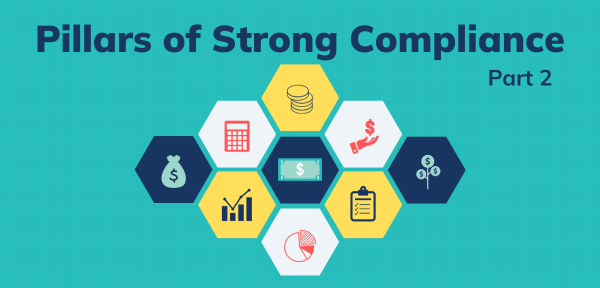In this post, we continue our three-part series on the essential components of a strong compliance program, as outlined in Ascent’s Regulatory Compliance Scorecard.
In our first article, we explored the foundational aspects of compliance, emphasizing the importance of defining corporate entities and identifying applicable laws, rules, and regulations. Now, as we journey further into the world of compliance, we explore the process of building an accurate, centralized regulatory obligations library – which is essential to enabling compliance teams to effectively and efficiently incorporate obligations into policies and controls.
––
Creating a Tailored Inventory of Regulatory Obligations
A robust compliance program requires the creation of tailored lists of obligations for each corporate entity, drilled down to the citation level. This granular approach ensures that every regulatory obligation is explicitly documented and understood. It empowers your organization to address compliance with a level of precision that leaves no room for ambiguity.
Utilize these lists of obligations as your compliance blueprint. They provide a detailed, step-by-step guide to fulfilling your compliance responsibilities. Each obligation is like a puzzle piece, and when you fit them all together correctly, they form a complete picture of compliance.
There are numerous benefits to creating an accurate obligations inventory:
- Clarity: Every team member knows precisely what is expected, reducing confusion and errors.
- Accountability: When obligations are well-documented, it becomes easier to assign responsibility for their fulfillment.
- Efficiency: With detailed obligations in hand, your organization can allocate resources more efficiently, focusing on areas of greater risk or significance.
- Audit-Readiness: In the case of regulatory audits, having comprehensive lists of obligations ensures you can provide a detailed compliance audit trail.
Centralizing Obligations: The Repository of Compliance Knowledge
Establishing a central obligations inventory for all of your business’s regulatory obligations serves as a repository of knowledge, for well informed decision making. This library should be designed to accommodate updates, revisions, and real-time additions as regulatory requirements change.
Here’s why a central obligations library is crucial:
- Accessibility: All relevant compliance information is in one place, accessible to authorized personnel whenever needed.
- Consistency: Centralized data ensures that everyone in your organization is working with the same information.
- Efficiency: When you can easily locate and retrieve compliance data, it streamlines decision-making, reporting, and auditing processes.
- Scalability: As your organization grows or regulations change, your centralized compliance repository can expand and adapt to accommodate new obligations and requirements.
In addition to centralization, integration of your obligation library with best-in-class GRC platforms Diligent, IBM OpenPages, Onspring, and Resolver enable compliance teams to efficiently map obligations to organizational policies, procedures and controls.
––
As you continue to build a strong compliance infrastructure, remember that this foundation is not static; it should evolve in step with regulatory changes and organizational growth.
In the final article of our series, we will explore how to maintain a strong compliance program by proactively monitoring the regulatory landscape for effective change management.
Rate your compliance-readiness in just 5 minutes
Rate your compliance-readiness in just 5 minutes








